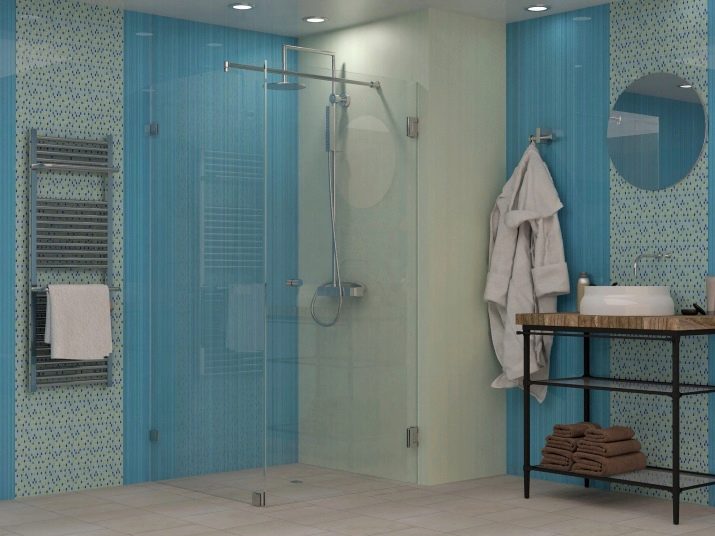Shower in a bathroom without a cubicle: pros and cons, design examples
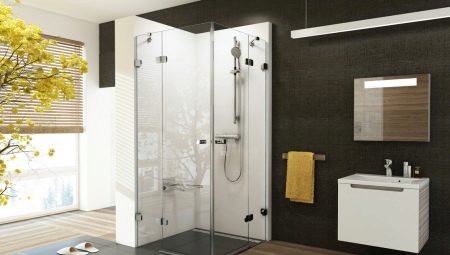
In modern interiors, the shower cabin has become very popular, especially in small rooms. Often it is combined with a bathtub, or only a shower stall is installed, refusing to use a bathtub. Shower cabins quickly got hold of a rival - options without a pallet. This solution allows you to be creative and create a beautiful shower enclosure that blends seamlessly with the design of the entire room.
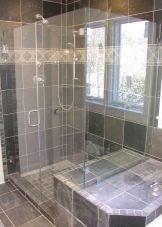
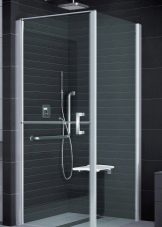
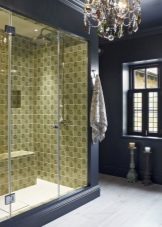
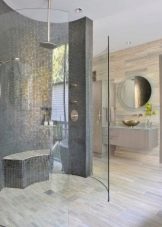
Peculiarities
If the bathroom is small, then a shower without a cubicle becomes the optimal solution. It can be either a rather simple design or an intricate, original one. The main feature of models without a cab is the absence of a pallet. The base is at floor level. The place for taking a shower is highlighted with doors, curtains and is zoned with the help of decor. The walls are most often chosen transparent and mounted directly to the floor in which the drain is located.

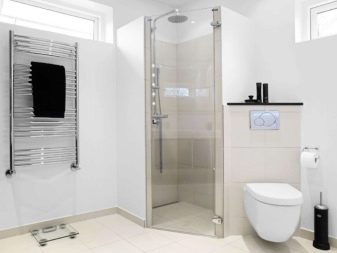
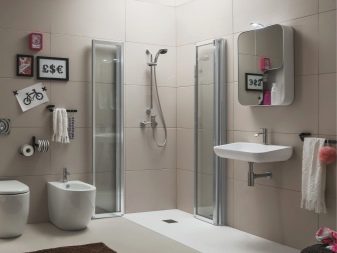
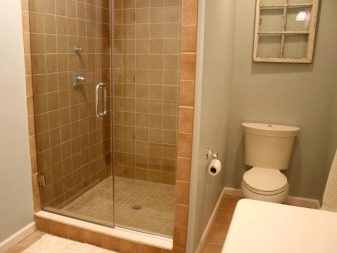
The floor in this area consists of several layers:
- the foundation;
- thermal insulation layer;
- screed;
- waterproofing layer;
- screed again;
- tile.
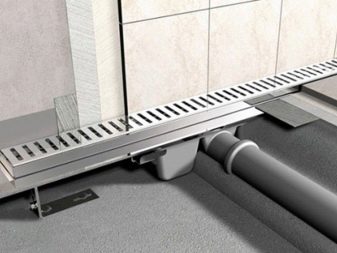
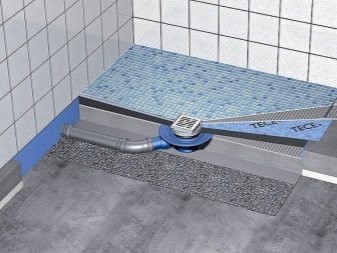
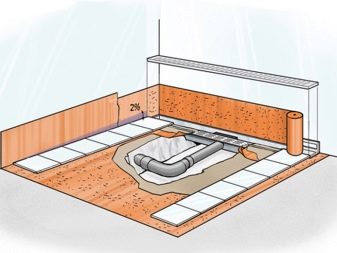
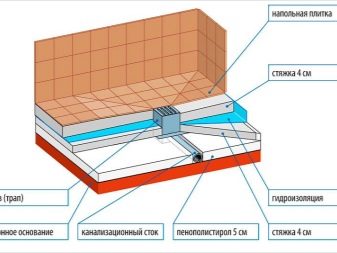
Such a shower can take different forms:
- pentagon;
- square;
- rectangle;
- ellipse;
- semicircle.
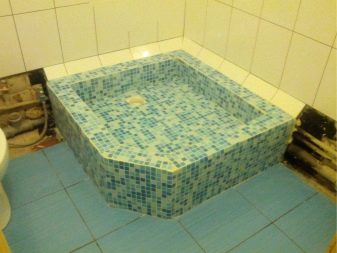
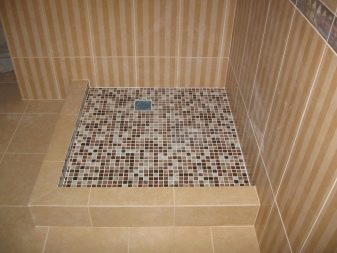

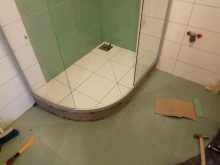
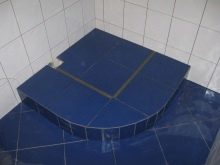
The choice of form largely depends not only on the area, but also on how simple or difficult the communication installation will be. The size of the cabins directly depends on the room's capabilities and the owner's wishes:
- the average is 90 cm for a single;
- about 120 - for a double.
A shower without a tray will fit well into the interior of both large and small bathrooms, and the variety of finishes allows you to organize a very original design. Visually, this design looks light and airy, physically does not clutter up the space. The filling of the shower cabin can be any, the most laconic or, on the contrary, expensive and luxurious. The choice of material for decoration, the design of doors, walls must be consistent with the overall composition.
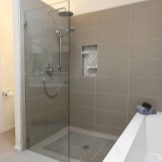
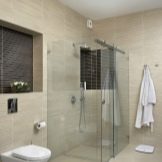
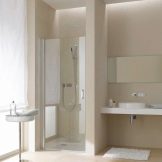
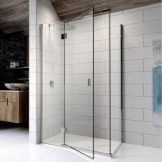
Advantages and disadvantages
Organizing a bathroom with a shower without a pallet has quite a few advantages:
- the design is more spacious than the standard cab;
- simplicity and conciseness add style to the room,
- walls and doors - that's all you need for installation;
- maintenance of such a structure is much easier than for a bulky cabin;
- it is convenient and pleasant to wash in it, you can control the degree of filling, add a massage or tropical shower at will;
- since the device is quite simple, the number of possible breakdowns is sharply reduced;
- the design decision can be almost anything, it all depends on the creative imagination of the owners.
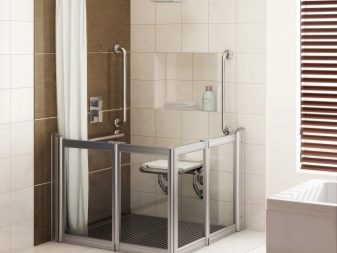
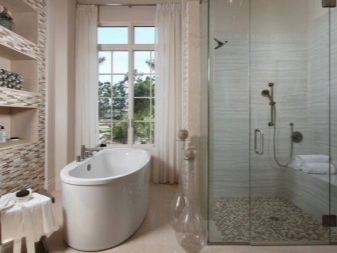
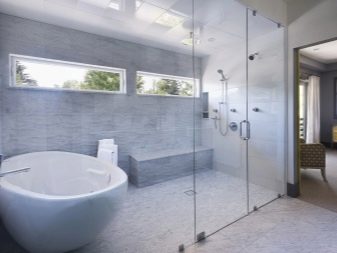

In addition to the advantages, you need to consider that there are a number of disadvantages:
- in a multi-storey building, the risk of flooding of apartments from below increases, it is important that a person who is well versed in the issue and knows all the nuances is engaged in the installation;
- if the bathroom floor is not raised and a hydraulic seal is installed, an unpleasant odor may appear;
- installation can be tricky as insulation, wall and floor alignment is required;
- installation of a drain in the direction of the drain is required, otherwise the water will stagnate.
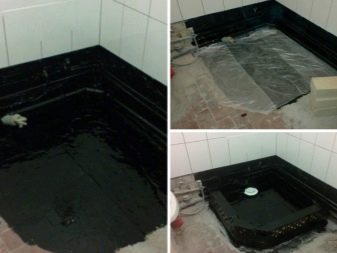
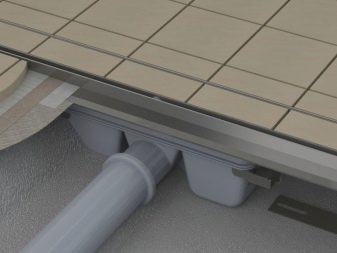
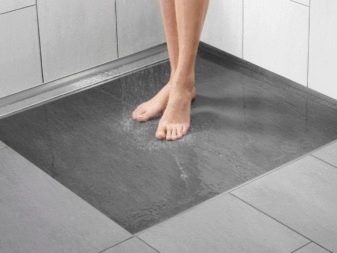
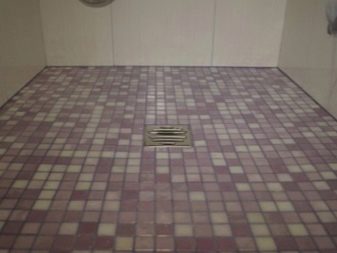
Finishing materials
Since there are no walls in the cabin, it is necessary to qualitatively arrange the walls of the bathroom, which will serve as a replacement for them.
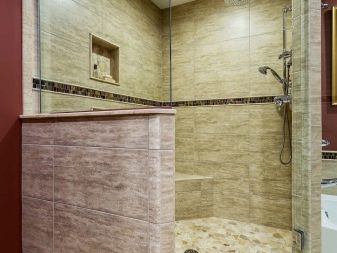
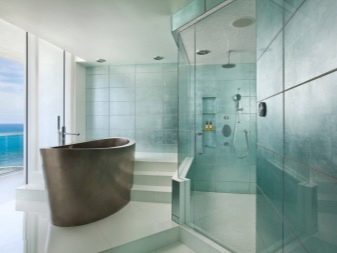
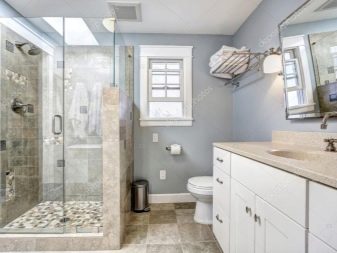
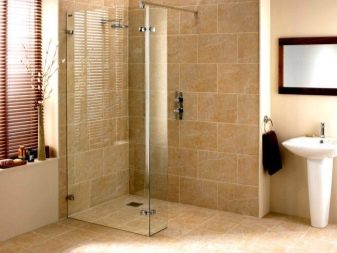
Ceramic tile
Traditional showers without a cubicle are laid out from tiles - this is the most popular and versatile finishing method... A huge plus of ceramics is strength, high decorative effect, excellent operating characteristics. Caring for such material is simple, practical and unpretentious to use, very environmentally friendly. Ceramic tiles tolerate moisture, different temperatures, and chemical effects well. With all this, the price is quite adequate, the range allows you to choose both elite and budget tiles.
In a small bathroom, do not decorate the walls with too large tiles, then the room will visually appear larger. There are a lot of options for color, print, decor, you can pick it up for any style direction. The only caveat to consider is that seam maintenance can be quite difficult, requiring regular cleaning.
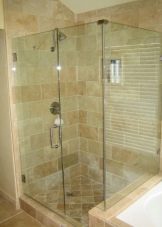
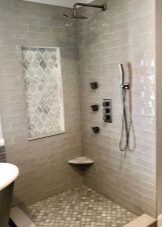
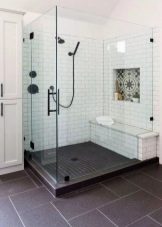
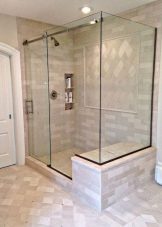
Mosaic
It can be made of plastic, ceramic, metal. Mirror tiles look very impressive, which is used as a base or an additional element of the composition. This is a fairly practical way of finishing, in addition, the variety of shapes, shades and textures provide tremendous opportunities for design. Showers decorated with gold and silver mosaics look exquisite.
This material allows you to lay out a drawing, ornament or other decor of different levels of complexity. Glass mosaic tiles are the most durable. The main disadvantages include the high cost and complexity of the finishing work.
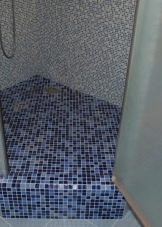
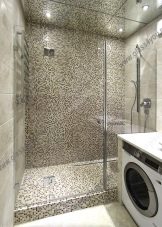

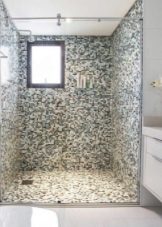
Marble
This method is considered the most status, presentable, chic. The properties of marble - the highest strength, durability - make it an almost ideal material. However, it is only popular with wealthy people due to its high cost. In addition, marble fits well into a truly luxurious interior; all the details of the composition must be appropriate.
If there is a desire to decorate the shower room with marble, but the funds do not allow, you can use imitating analogs - an artificial stone. It looks the same, but is much cheaper.
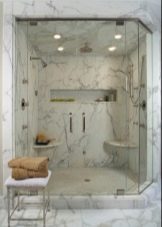

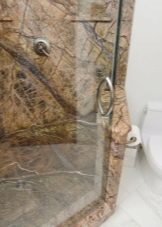
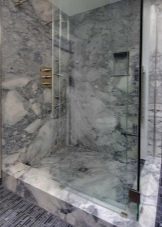
Combinations
All types of tiles can be effectively combined, combined in beautiful compositions.For example, a mosaic can be used only for a decorative accent, an image or ornament can be laid out of it, and the main background can be made of ceramics.
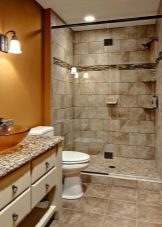

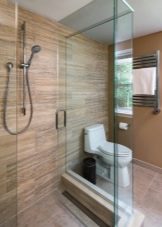
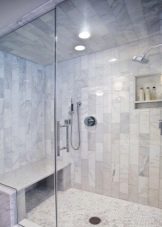
In addition, the walls in the shower room can be finished with:
- plastic panels, they tolerate moisture and high temperature well, are represented by a wide selection of shades, prints, you can finish it yourself, since styling is not difficult;
- paint - there are special latex-type paints that are not harmed by water, however, this method is real only with perfectly flat walls;
- adhesive film - the most budgetary option that you can do yourself, but there is a significant disadvantage, the film does not allow air to pass through, which means that the walls can become moldy.
A very important point is the choice of material for the walls and doors of the shower room. It is optimal if it is a surface that is water-repellent, not porous, on which moisture drops do not dry out. This surface is easier to clean. There are several common materials.
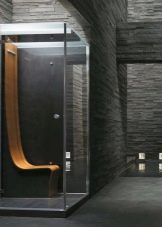


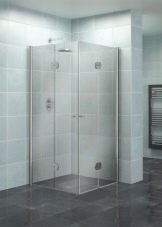
Strained glass:
- the highest hygiene;
- strength;
- there is no danger of mold and mildew development;
- ease of care;
- great weight.

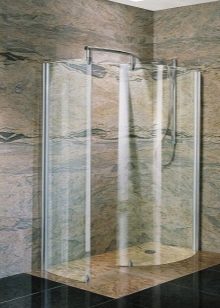
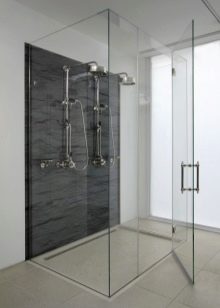
Polystyrene:
- lighter;
- budgetary;
- not too durable;
- in leaving is capricious.
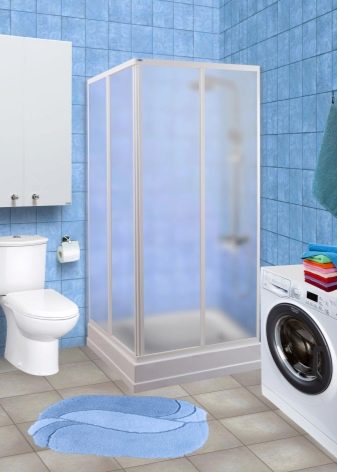
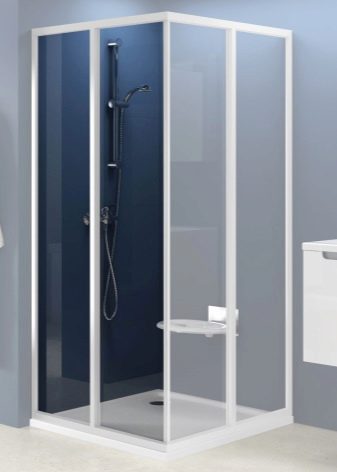
Plexiglass:
- hygienic;
- reliable;
- there are no conditions for the development of fungus, mold;
- lung;
- subject to mechanical damage, scratched.
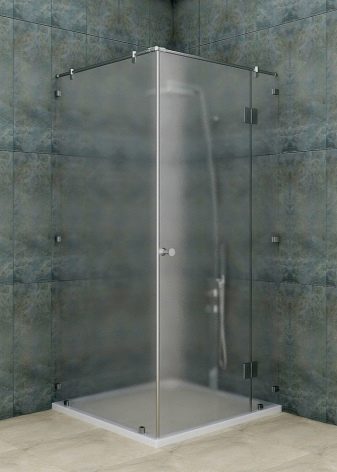
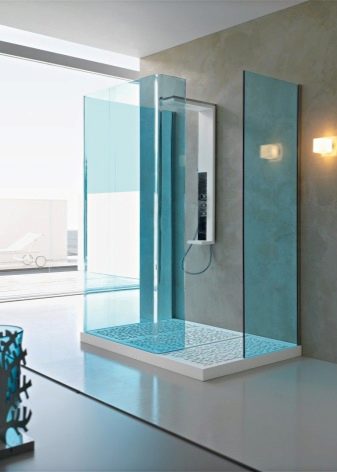
Triplex:
- double type tempered glass;
- covered with a film;
- durable material;
- expensive.
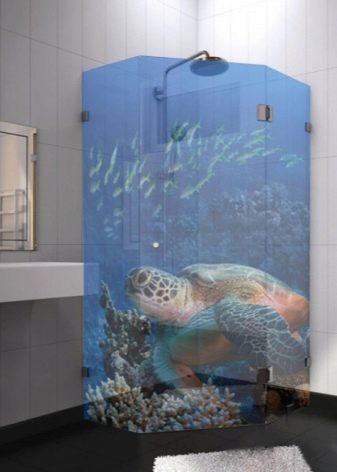
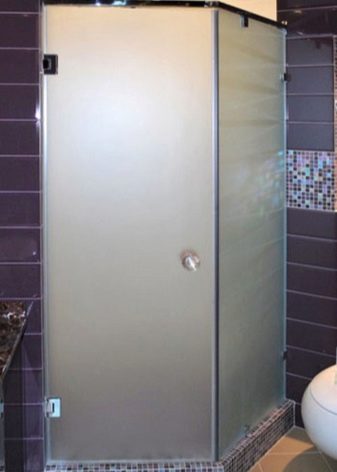
Walls and doors can be both transparent and translucent, matte, mirror.
The flooring is most often formed from porcelain stoneware, which is selected taking into account the general style, color, details of the composition.



Color scheme
Bathroom design is impossible without careful selection of colors. Color is the basis of a well-thought-out interior. A shower room without a cubicle can merge with the overall design and stand out only by the walls, or be zoned with a color scheme. The main design rule is that light colors increase the space. Therefore, if the bathroom is small, bet on pastel, neutral shades and lack of contrast. There will be a lot of air in a room decorated in snow-white, light gray, beige colors.
All shades of blue, aquamarine, aquamarine, green are ideal for the shower. The pastel range will also fit well into the design - lavender, lemon, mint, rose. If there is no need to visually expand the bathroom, you can play with contrasts. the black shower room looks luxurious, graphite in combination with white and gray. The choice of color largely depends on the style direction on which the bet is made.
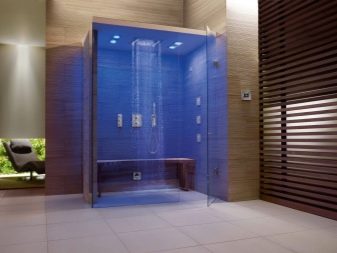
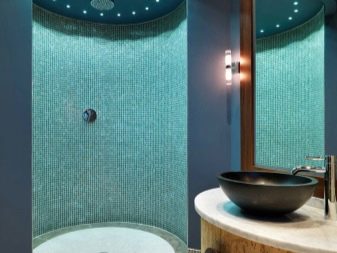
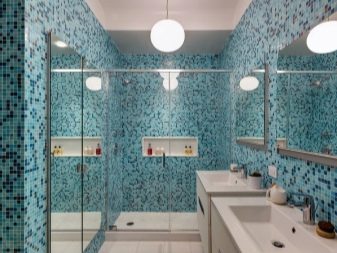
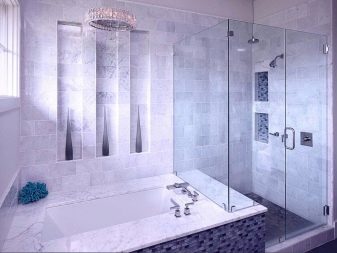
Style solution
Style options are selected depending on personal preference, bathroom size and capabilities. The most popular areas in which a shower without a cabin would be appropriate are:
- loft - it is better to choose doors made of glass or with a metal finish, brick walls with a rough finish, hidden pipes, beautiful tiles on the floor;
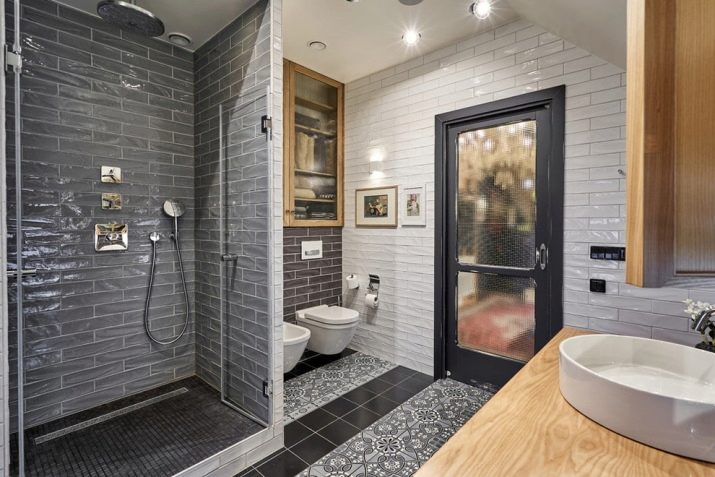
- minimalism - hidden communications, barely noticeable taps and mixers, glass doors without decor, monochrome wall decoration in neutral colors;
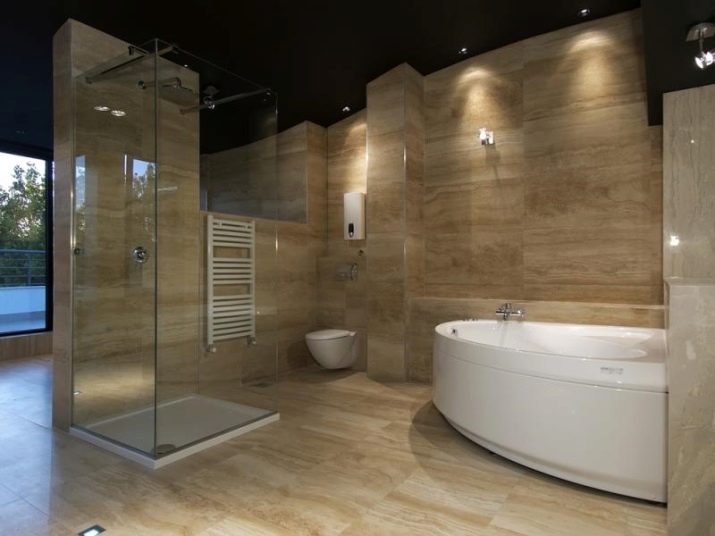
- high tech - high-tech, multifunctional equipment, a lot of metal, glass, gloss in decoration, good lighting;
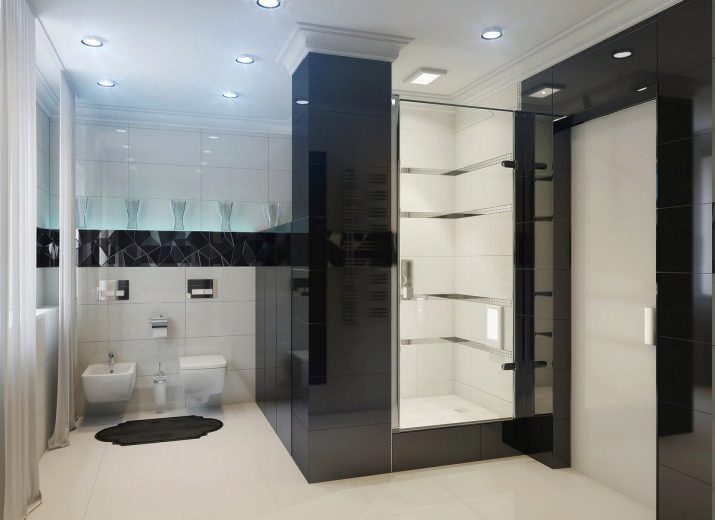
- art deco - the walls are laid out with tiles with a rich pattern, the decor is gold, the ceiling is with stucco molding, the general tone is black and brown, there is a lot of natural stone in the decoration;
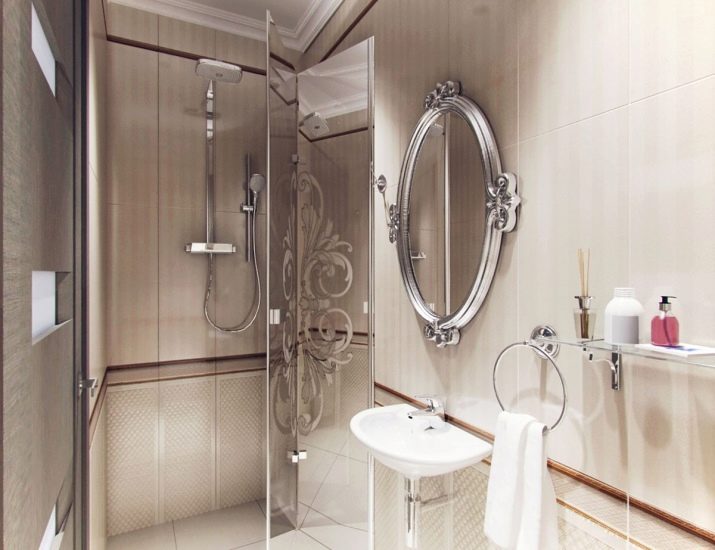
- eco-style - a tile is selected that imitates different types of wood, a complete rejection of plastic, the color scheme is natural: green, brown, beige;
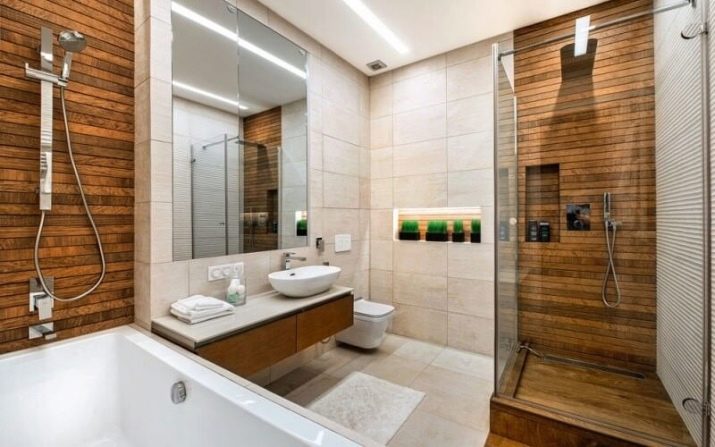
- scandinavian - light background, close to white, many bright practical details, wood grain decor;
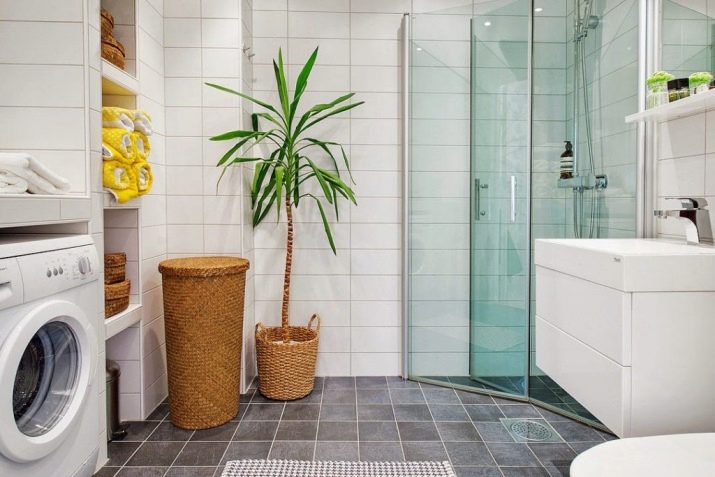
- modern - there should be both a shower room and a bathtub, smooth lines, light natural colors, rich decor;
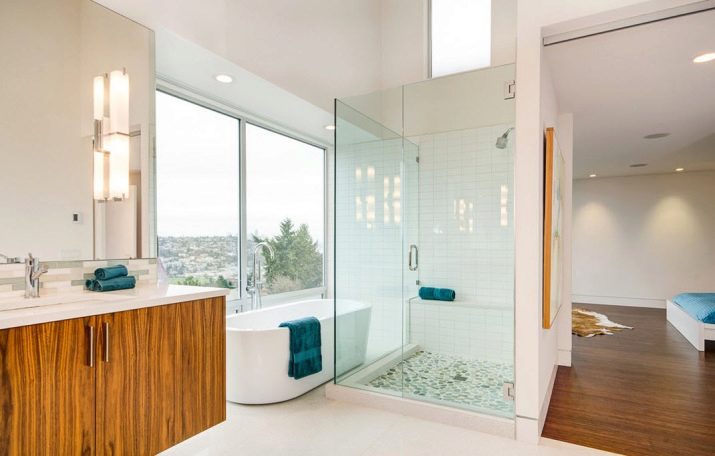
- sea - a combination of white, blue, green palettes in the design can be either very light or saturated.
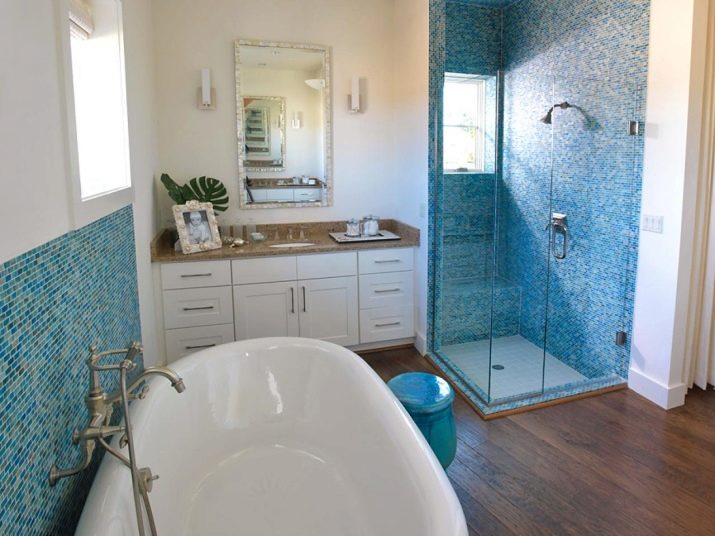
Where to locate?
The optimal location of the shower room is a corner or niche. Faucets, shower are mounted in the corner on the wall. The access to the doors must be free. It is important to plan a room with a shower without a cabin, taking into account some of the nuances:
- the convenience of installing communications needs to be thought out, it is irrational to move the cabin to the corner opposite to the drain;
- if the bathroom is rectangular and elongated, you can place the shower room along the short wall;
- in the combined bathroom, place the plumbing in the corners to the maximum.

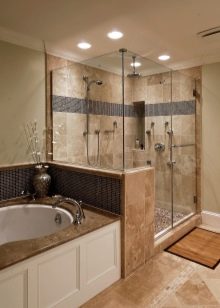
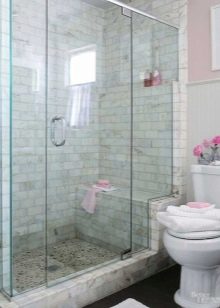
Beautiful examples in the interior
- The black shower corner is an excellent solution for a spacious room.
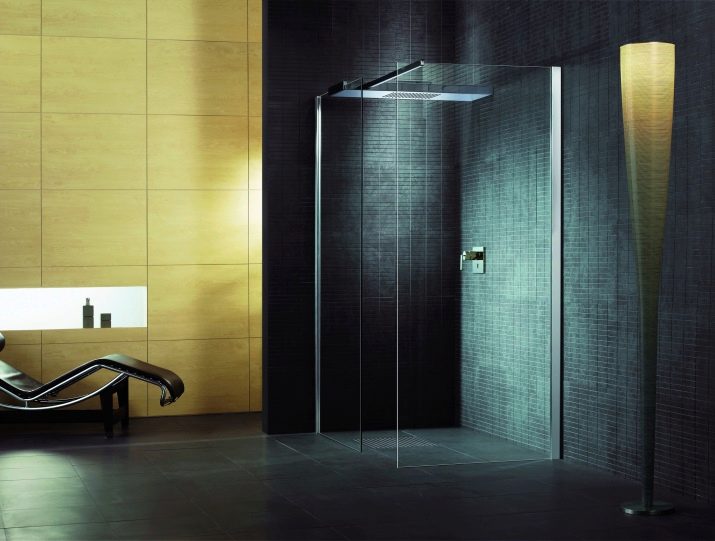
- Mosaic tiles are a great way to zone and decorate your shower room.
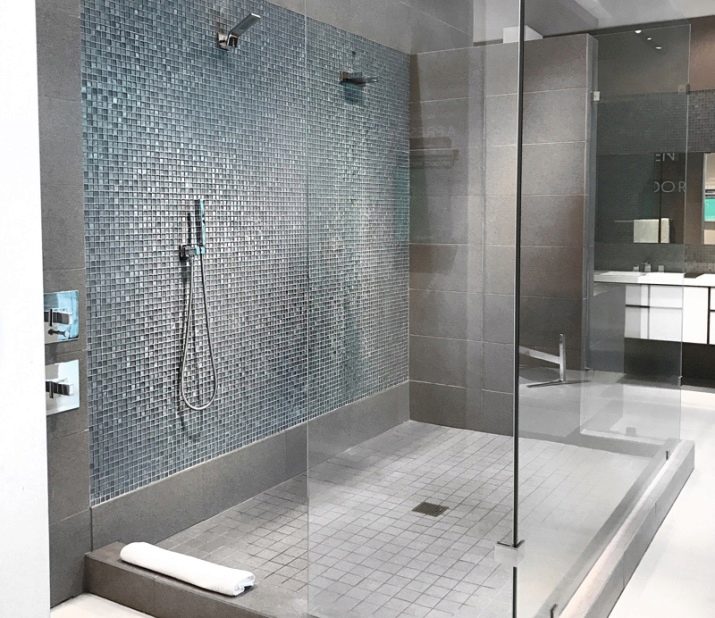
- A shower room without a cubicle can take up very little space; physically and visually, the bathroom will seem more spacious.
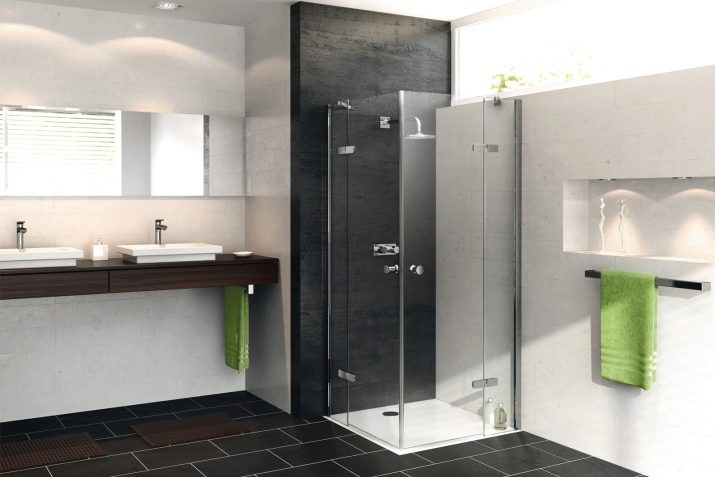
- Original tiles on the floor and walls transform the shower corner into an aesthetic and practical place.
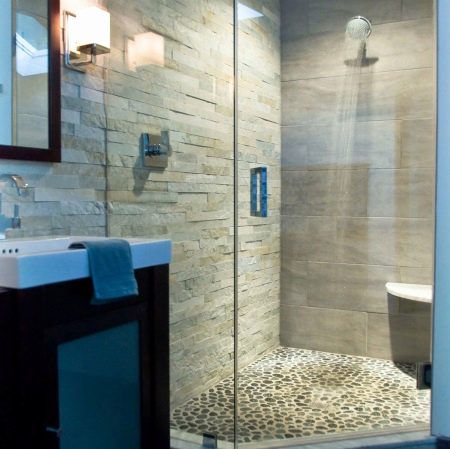
- The blue project is a very popular solution in the design of bathrooms.
